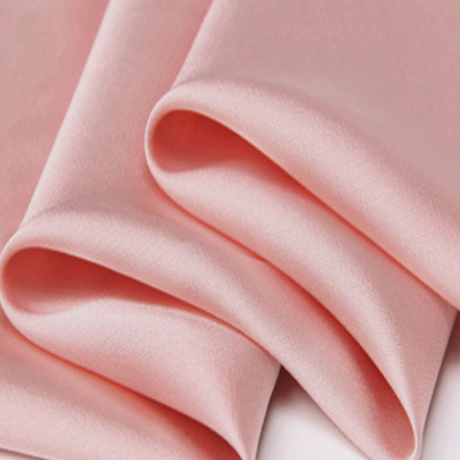What is chemical fiber chemical fiber clothing fabric introduction

Chemical fiber is a kind of fiber with textile properties, which is made from natural polymer compound or synthetic polymer compound as raw material, through preparation of spinning stock solution, spinning and post-treatment.
Chemical fiber is chemical fiber, chemical fiber with natural or artificial synthetic polymer material as raw materials, after chemical or physical processing of the fiber. Due to the different sources of the polymer compounds used, it can be divided into artificial fibers with natural polymer materials and synthetic fibers with synthetic polymer materials. Chemical fiber for short.
Fiber length, thickness, whiteness, gloss and other properties can be adjusted in the production process. And respectively with light resistance, wear resistance, easy to wash and dry, no mildew, no moth and other advantages. It is widely used in manufacturing clothing fabric, press cloth, transport belt, hose, rope, fishing net, electrical insulation wire, medical suture, tire cord and parachute, etc. The polymer compound can be made into a solution or melt, from the spinneret hole in the pressure, and then solidified into fiber. Products can be continuous filament, cut into a certain length of short fibers or uncut bundles of silk, etc. As for the trade name of chemical fiber, the synthetic staple fiber shall be given the name "lun" (for example, nylon and polyester), and the cellulose staple fiber shall be given the name "Xian" (for example, sticky fiber and copper ammonia fiber), and the filament filament shall be added with the word "si" at the end, or the "lun" and "xian" shall be changed to "silk".
species
The preparation of chemical fiber is usually the first natural or synthetic polymer material or inorganic material into spinning melt or solution, and then after filtration, measurement, by spinneret (plate) extruded into liquid flow, and then solidified into fiber. At this time, the fiber is called primary fiber, which has poor mechanical properties and must go through a series of post-processing procedures to meet the requirements of textile processing and use. In order to improve the mechanical properties and dimensional stability of the fiber, post-processing is mainly used to stretch and heat set the fiber. Stretching is the orientation of macromolecules or structural units along the fiber axis. Thermal setting mainly relaxes the internal stress in the fiber. The post-processing of wet spun fibers also includes washing, oiling, drying and other processes. When spinning filament, the process can be wound into a drum; Spinning staple fiber also need to increase crimping, cutting and packaging processes. Among the raw materials used to produce textiles, cotton, hemp, silk and wool (wool) have the longest history. However, natural resources are limited after all. The output of cotton is about 50 kg/ha, mulberry trees are also needed to raise silkworms and silk, and animal husbandry is needed to increase wool production. So chemists began to work on spinning fabrics from cheaper and more abundant materials called chemical fibers.
Industrial upgrading

https://www.nbsoco.com/pro-2-71-728.html
First, we will improve the quality of conventional products and increase the added value of products. Adopt advanced and applicable technology to transform and upgrade the traditional chemical fiber process, equipment and production automation control level, focus on the flexibility of production equipment, the quality of conventional products, and realize the diversified and efficient production of polyester, viscose and other large complete sets of equipment. Actively promote fiber spinning fluid coloring technology, strengthen the joint development of chemical fiber and downstream applications, accelerate the development of high simulation, functional, multifunctional composite and other differentiated fibers, improve the added value of products.

https://www.nbsoco.com/pro-2-71-203.html
The second is to improve the industrialization level of high-performance fiber. It pays attention to the construction of innovation capacity and talent training in high-performance fiber industry, and builds an industry-university-research-application innovation platform and an industrial alliance platform by integrating basic research, engineering supporting facilities and application research resources, so as to improve the level of industrialization and enhance the innovation strength of the industry. To organize and implement the special project of high performance fiber industrialization, with the goal of low cost, serialization and high quality, accelerate the industrialization of high performance fiber and its composite materials, improve the supporting capacity of raw and auxiliary materials and equipment, and comprehensively strengthen the supporting role of chemical fiber industry in the national economy and strategic emerging industries.
The third is to promote the development of biomass fiber. Make full use of crop waste, bamboo, hemp, fast-growing forest and Marine biological resources, develop new biomass fiber materials to replace petroleum resources, break through new green processing technology and equipment integration technology of fiber materials, and realize industrial production. Strengthen the biochemical conversion mechanism of biomass fiber raw material, melt spinning fiber engineering technology, renewable cellulose derivatives polymer fiber forming mechanism and preparation of new technology, biological polyester melt spinning key technology, key technology and the ionic liquid solvent method regenerated cellulose fiber engineering, Marine biological macromolecule material research of high efficient spinning technology and high-performance.
Fourth, we will actively promote energy conservation, emissions reduction and resource recycling. Strengthen the industry "low-carbon economy" technology research. Accelerate the industrialization research and development and popularization of new energy-saving and emission reduction technologies and equipment, promote the application of domestically made projects and technologies such as cotton pulp black liquor treatment technology, waste bottle sheet cleaning wastewater reuse, viscose wastewater and waste gas treatment and recovery. Strengthen the transition from terminal management to process monitoring and clean production technology, and promote the clean production of viscose and reused fiber. Timely revision of viscose fiber industry access conditions. We will move faster to close down outdated production processes and equipment that are high in energy consumption, high in pollution, and low in efficiency, and optimize and adjust the industrial structure. Actively promote industry energy contract management, clean production audit, enterprise carbon footprint certification and other work. Vigorously promote the recycling of resources, encourage and standardize the development of the recycling fiber industry, and focus on strengthening the integration, upgrading and popularization of recycling technologies, products and complete sets of equipment such as waste polyester and silk. To formulate a circular economy development plan and technology roadmap for recycling and reuse of textile products, promote the industrialization of recycling and utilization technology of chemical fiber, especially pure polyester fabric and clothing, and guide green consumption in society.
Fifth, we will accelerate the independence and engineering of key technologies and equipment. Strengthen integrated innovation, develop advanced practical technology with independent intellectual property rights, make breakthroughs in the research and development of major technology and equipment, the design of key projects and the localization of key equipment technologies, improve the research and development capacity and engineering construction capacity of engineering companies, and pay attention to the development and application of energy saving, efficient and environmentally friendly chemical fiber and its raw material equipment. Emphasis should be placed on accelerating the industrialization development of core technology, supporting equipment and key components of high-tech fiber, strengthening the integrated research of process software and equipment, and promoting the development of high-tech fiber and its raw materials industry.